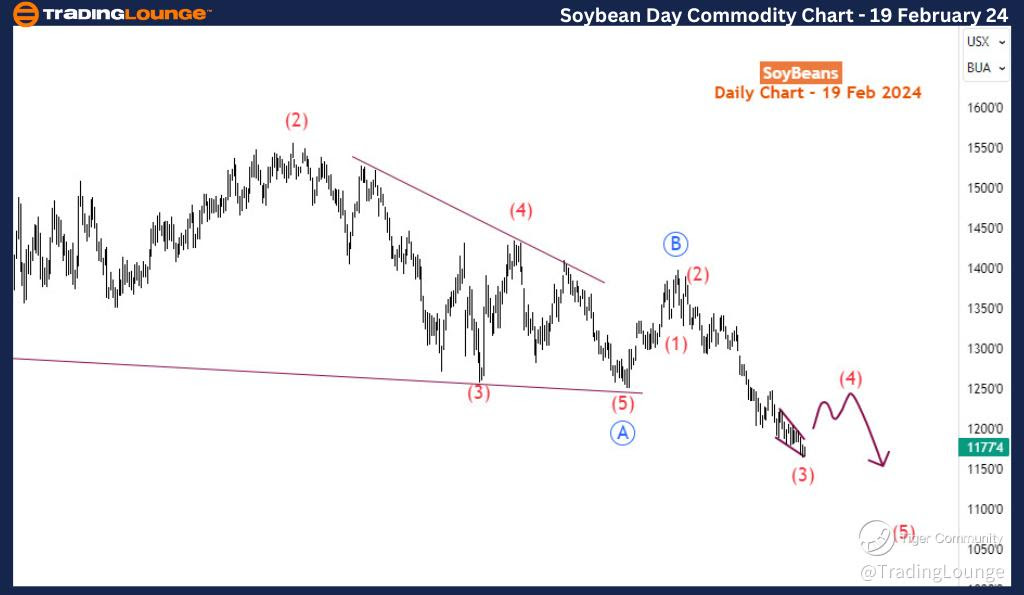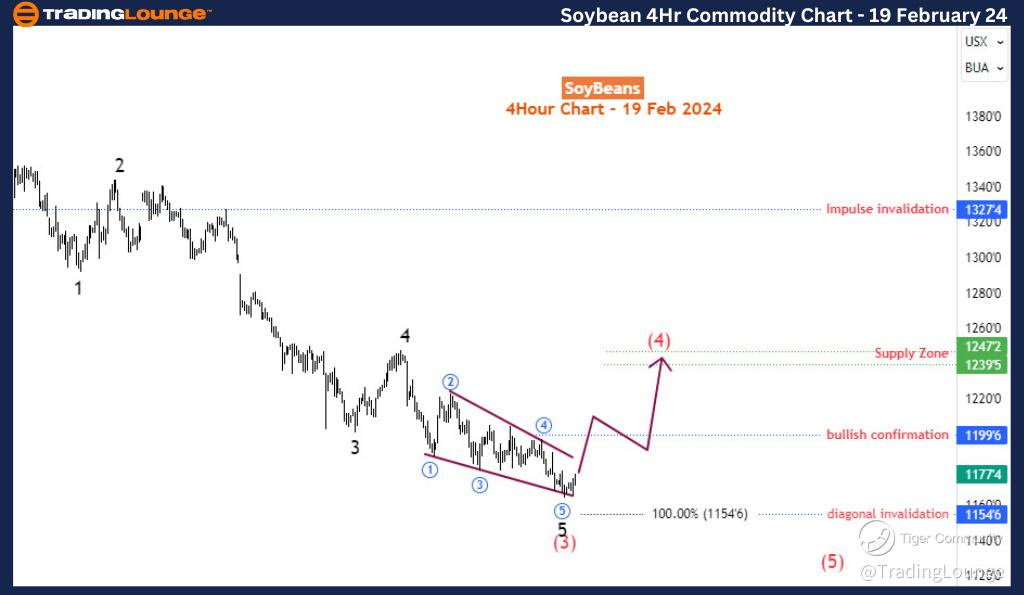SoyBean Elliott wave analysis - 19 February 24
Function - Trend
Mode - Impulsive
Structure - Impulse Wave
Position - Black Wave 5 of higher degree red wave (3)
Direction - Higher degree red wave (4)
Since the peak of the Russia-Ukraine conflict in 2022, SoyBean prices have remained subdued, trading at 1783 in June 2022 before plummeting to a three-year low of 1164 last week. The Elliott wave theory provides insights into the commodity's price action over the past three years, offering a structural pattern for analysis, forecasting, and trading.
On the daily timeframe, SoyBean appears to be undergoing a 3-wave correction denoted as blue wave A-B-C. Wave A concluded with a diagonal pattern, followed by a shallow bullish correction in wave B lasting just over 5 weeks. Subsequently, the decline in blue wave C continued impulsively. Preceding this decline was a 5-wave impulse rally labeled blue 1-2-3-4-5, a common occurrence in Elliott wave theory where a 3-wave counter-trend follows a 5-wave impulse move.
Currently, amid the third leg of the bearish correction (blue wave C), further downside is anticipated as wave C remains incomplete. However, even within a bearish correction, bullish moves can occur, as indicated by the potential development of red sub-wave (4) within blue wave C.
The 4-hour timeframe illustrates the development of sub-waves within blue wave C, with sub-wave (3) possibly concluding with an ending diagonal pattern and a gradual upward price reaction. A breakout above the diagonal's upper boundary would signal the onset of a red sub-wave (4), potentially leading to a bullish corrective rally towards the 1239-1263 supply zone. However, this rally may be limited to below 1260 before the broader bearish correction resumes with a red wave (5).
In summary, SoyBean may experience upward movement in the coming days or weeks, primarily corrective. Nonetheless, the overall outlook remains bearish.
Technical Analyst: Sanmi Adeagbo
Source: visit Tradinglounge.com and learn From the Experts Join TradingLounge Here
See Previous: Wheat

